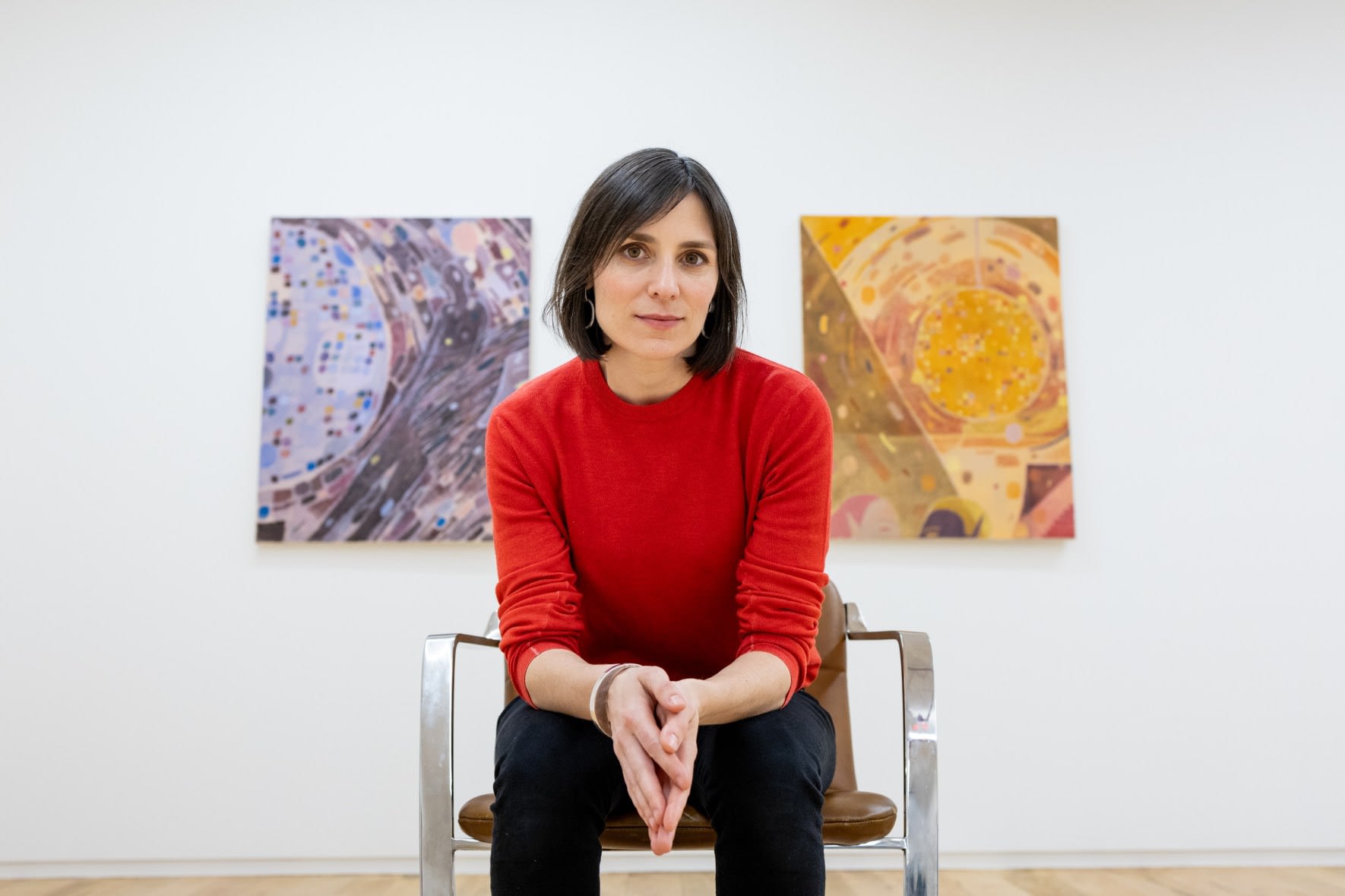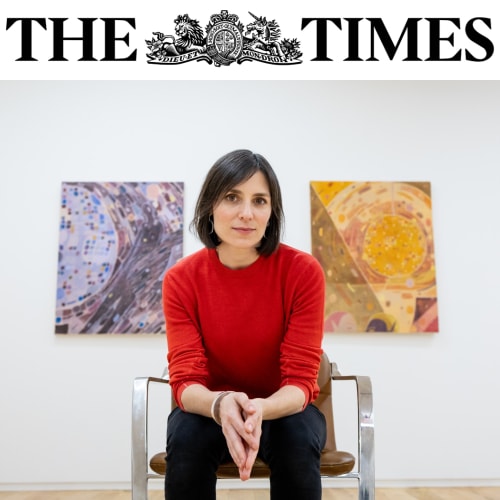Undercover in the art world: what I found out working for dealers
Drug-fuelled, immoral, obsessed with social status: the gallery scene was all that and more, the American journalist Bianca Bosker tells Daniel Bates
Daniel Bates
Monday March 11, 2024
An artwork is “placed”, never sold. Websites are “online viewing rooms” and a piece is not “boring”, it is “durational”, Bianca Bosker says with a laugh from her apartment in Manhattan. These are some of the rules the 37-year-old writer learnt while infiltrating the art world in New York.
Bosker went undercover for five years as an assistant to ritzy New York art dealers. The result is a book, Get the Picture: A Mind-Bending Journey among the Inspired Artists and Obsessive Art Fiends Who Taught Me How to See, which was published last month in the US and is causing quite the stir.
Darkly funny, it has been hailed by critics as a gonzo-style industry takedown. It reads as if Louis Theroux spent one of his Weird Weekends in Manhattan with the head of the Moma.

Bianca Bosker went undercover for five years as an assistant to ritzy New York art dealers
From her vantage point of lowly assistant, Bosker exposes a world that is at times drug-fuelled, immoral, fraudulent (“We’re all white collar criminals,” remarked one gallerist gleefully, revealing he paid no sales tax) and often dispiriting. It is an industry, Bosker reveals, in which the artist can end up sidelined ― only seeing a tiny fraction of the vast riches their artwork can command. It’s not all doom and gloom. The book is also delightfully absurd, skewering the elite.
“I spoke with an ex-Gagosian employee who said she received thorough coaching on how to answer the phones. She was told to record herself rehearsing the word ‘Gagosian’ and she had to say it with a slight downward inflection. You didn’t want to sound happy but you don’t want to sound dead,” she says.
Why take on the art world, I ask. Bosker’s curiosity was partly personal. As a child she was an avid painter but lost interest in art as she got older. When she walked into a gallery it felt like “everyone else was getting the punchline apart from me”.

Bosker at the DIMIN in New York. PHOTO: JACKIE MOLLOY
As a journalist ― she is a contributor at The Atlantic ― she wanted to write about the art scene but when she started asking questions, the pushback from insiders only intrigued her. “Some people flat out refused to speak to me. Others made clear if I wrote anything they disagreed with, there would be hell to pay.”
Instead, Bosker adopted an immersive method of journalism. In that respect, she had form: she had written a previous book, Cork Dork, on the world of fine wine, for which she trained to become a sommelier, and that became a New York Times bestseller. This time round, it would be a much deeper dive. Her quest began in 2018 in the same way as that of countless others trying to break into the art world in New York: begging for a job.
She was open about being a journalist. After dozens of rejections, Jack Barrett, the owner of the fashionable 315 Gallery in downtown Brooklyn, agreed to let her be his assistant.
Seen as a champion of underground art in New York, Barrett had an air of cultivated cool. He mocked Bosker’s clothes. “An all-black wardrobe was considered boring,” Bosker says. Not that his baseball cap, sweater and jeans combination was trailblazing but it adhered to an unwritten dress code. For an opening at Gagosian, on the Upper East Side, “people tend to be as shimmery as baby dolphins”, Bosker writes. Meanwhile, the aesthetic in Brooklyn would be “tattoos, beanies, hoodies, patchy dye jobs that made people look like their mums had grounded them before they could finish the job. Asymmetrical haircuts, ironic tube socks ― it’s artfully unkempt.”
Rules mattered, Barrett taught her. Not just anyone with money could buy a piece of art. Sure, they could inquire and their name might be added to a waitlist, never again to see the light of day. Instead, the currency of the art market was social cachet. If the right person bought a piece, it would add gravitas to the artwork and increase the status of other works by the artist.
“It’s about placing a work with individuals who have clout and connections within the art world. They might own work by other prominent artists or sit on museum boards, or are viewed as influencers. Gallerists and dealers make it their business to gather that sort of intelligence,” Bosker says. If you’re simply a “Joe Schmo”, as it’s put to her, and you want an artwork, chances are you’ll just have to wait for an auction and stick your paddle in the air the longest, paying over the odds.
Bosker lasted five months with Barrett before fleeing to Manhattan where she was taken on by Denny Gallery, the Tribeca gallery owned by Elizabeth Denny and Rob Dimin. She arrived as they were preparing for Art Basel, the fair in Miami where $3 billion of art is put up for sale over a frantic and debauched four days.
Refreshingly, Denny and Dimin were candid with Bosker and told her that putting on a show at Untitled, a rival art fair to Art Basel, would cost them $39,000, the cost of running their gallery for a month. They planned to bring 20 abstract photos by the visual artist Erin O’Keefe to Miami and had to sell 13 of them, or $70,000, to make it worth their while.
In her book, Bosker records Dimin as saying: “We need to crush Miami and make a shit ton of money.” Luckily they did, with Dimin selling the first piece within 19 minutes of the fair opening, and even Bosker managing to hawk $50,000 over the course of the four days.
It was a wild time. “Miami was just this bacchanal held in the name of shopping for art,” she says. “After dinner one night my Uber was nearly stolen by a woman called Poodle. I went to a party at a museum, a party at someone’s house on a private island, then to Soho House where an insane mass of humanity was trying to get in, as if Miami was flooding and Soho House was the last boat. En route to Soho House I was on the phone selling a piece of artwork for thousands of dollars while people were snorting lines of cocaine next to me.”
At one party sponsored by Christian Louboutin, a gallerist from New York laughed in Bosker’s face at her Art Basel VIP pass and said: “That’s worthless.”
Schmoozing millionaires was tiring work. She met Beth Rudin DeWoody, the art patron born into a New York real estate fortune who began collecting at the age of 12 and who owned so much art she had filled a former munitions depot in Miami with it (she had run out of space to hang pictures in her New York apartment, her apartments in Los Angeles and her three homes in Palm Beach).
The notion of collectors hoarding artworks rankles. “There is something tragic about these amazing artworks that aren’t able to see the light of day,” she says. And yet, ethical buyers champion artists too. “While some people are stockpiling Warhols, there are some collectors who make a point of trying to collect the work of emerging artists because they feel they want to support their practice.”
Not every artwork can be hung, of course ― and in time Bosker had branched out, exploring the outer reaches of the performance art scene. At one opening she watched a middle-aged man in a Snow White costume climb halfway up a vast metal sheet and mumble something about a trapped animatronic goat into a microphone. At a gallery called Catbox Contemporary she observed a “scrotal hairless cat padding through a bathtub of frosted donuts”, she writes.
Neither experience was as troubling as her apprenticeship with the talented millennial artist Julie Curtiss. During Bosker’s time as Curtiss’s assistant, her painting Princess was sold for $106,000 at auction, after being sold for only $600 two years earlier.
Curtiss didn’t see a penny of the resale value of her work. “Some galleries do write in clauses to prevent buyers from flipping the work within a certain amount of time, or stating that when a buyer sells they have to give some per cent back to the artist,” says Bosker. That may apply to that first resale but it’s not going to refer to the resales down the line.
The result is that “artists are having to make difficult decisions over their healthcare while watching people get rich off their work”, she says. Another of Curtiss’s works, Pas Du Trois, went the same way ― and sold at Christie’s for $423,000, prompting Curtiss to fear she was in a bubble that could prematurely end her young career.
A baffling contradiction in the art world is that success can be an artist’s undoing. Bridget Donahue, who ran an ultra-hip gallery on the Lower East Side, put it to Bosker succinctly: curators consider it “gross” if somebody is too commercially successful. Ergo, even when you win, you can’t win. For Bosker, it was time to cash out on her undercover stint.
Not that she intends the book to be a downer. Quite the opposite. “To me there was something empowering about understanding that the alienation I felt from the art world wasn’t unique,” she says. “Understanding how these mechanisms get put into play and why helped me at least be able to engage with art on my own terms.”
The next few weeks will be taken up by Bosker’s book tour with stops in Los Angeles, Miami and New York, but the reception from the art world may make it more eventful than most. She says: “I did have one art journalist read the book and when I mentioned I was going on tour, his response was: ‘Are you bringing a bodyguard?’”
Get the Picture by Bianca Bosker (Atlantic £20). To order a copy go to timesbookshop.co.uk. Free UK standard P&P on orders over £25. Special discount available for Times+ members
